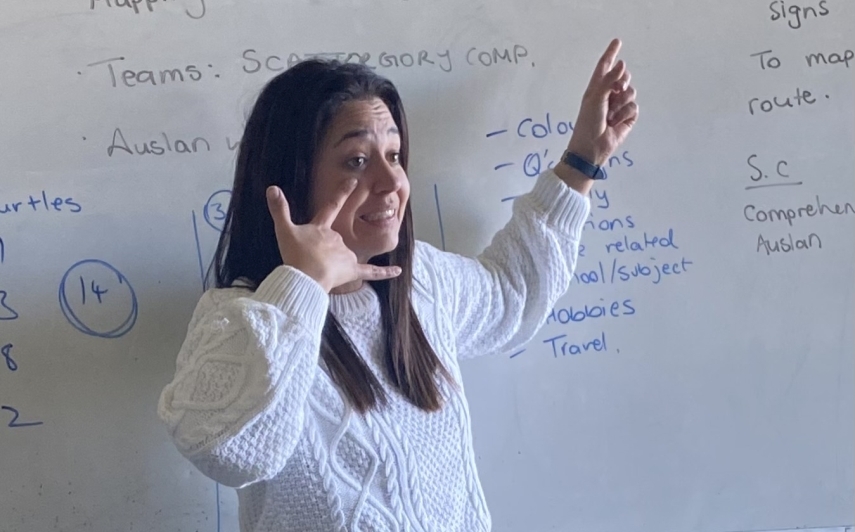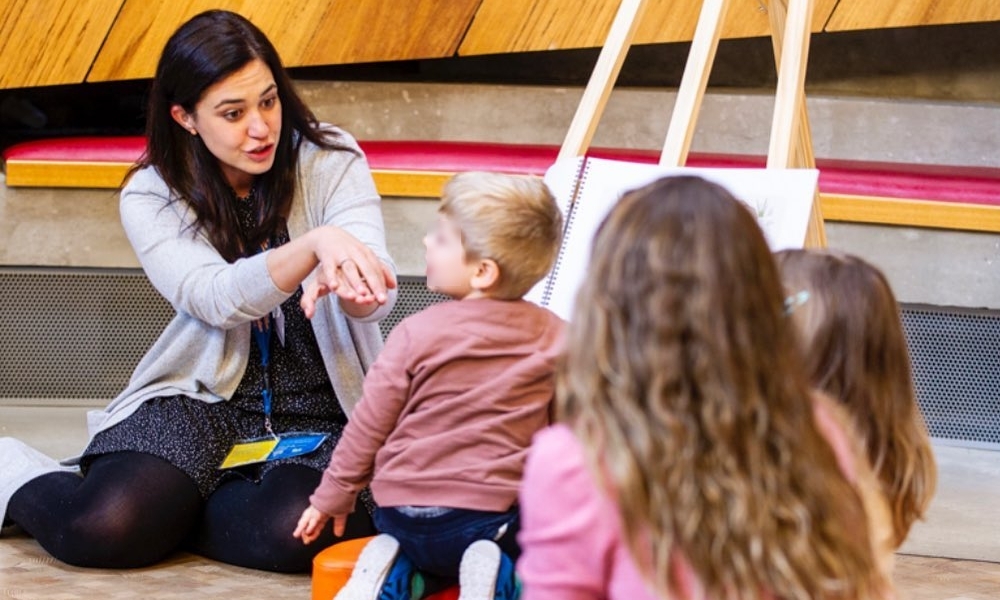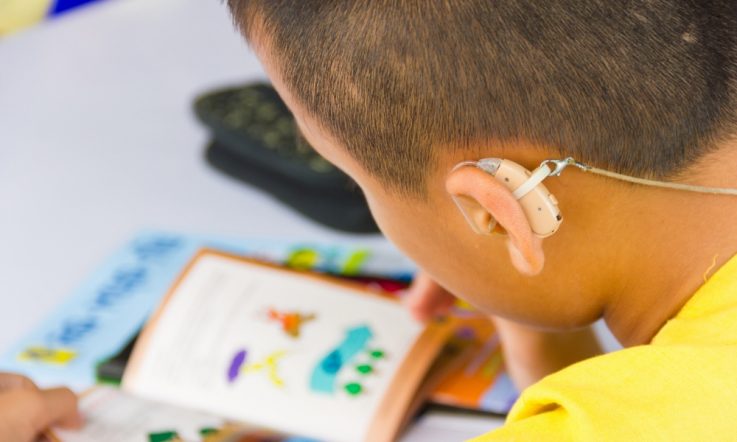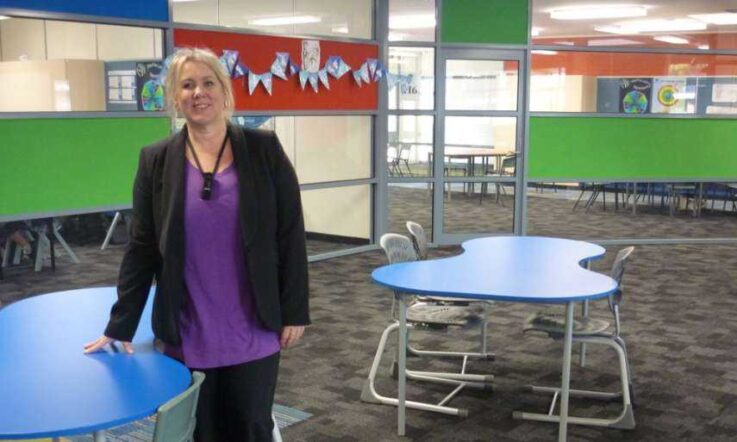As the world faced a global pandemic, the spotlight shone on our wonderful Auslan interpreters in the media, and more and more schools began to show interest in including Auslan in their curriculum.
However, there is a real shortage of skilled Auslan teachers, forcing regular teachers to be ushered in to teach a few basic signs, while scratching their heads, wondering why they can’t find a sign for every word. That’s because Auslan is not a substitute for the spoken language. It is a language in its own right, with its own culturally influenced phrases, grammatical rules, and features.
Auslan (a portmanteau of Australian Sign Language) is a visual language that goes beyond vocabulary; it’s all about using space, movement, and non-manual features (NMFs) to express and share information and stories.
It not only includes lexicalised signs (signs that are official, used by all, and found in the dictionary), but a range of linguistic parameters such as depicting signs – entity (for example, using a finger to represent a person walking or running, or an arm and hand to represent a tree) handling (using movements and handgrip to demonstrate how an object is used, opened and closed, turned, etc…) shape and space specifiers (also known as SASS, where you use your hands and fingers to visually demonstrate the shape, size, pattern and weight of an object), and constructed action, which feature heavily in storytelling.
Understanding, learning and developing the skills needed
Understanding how to comprehend and use depicting signs and constructed action is vital to gain full access to the language. These features allow the signer to create visual descriptions with various handshapes to resemble a tree, animal, object, person or even large crowds, depending on the unique and individual context shared by the signer.
Emphasis on distance, weight, texture and even level of annoyance is conveyed through meaningful facial expressions, movement, and pacing. The same sign for ‘rain’ can be used in many different ways to emphasise whether it’s trickling down or absolutely bucketing down, merely by adjusting facial expression and movement.
It takes time to develop and understand this skill, and even more skill to be able to teach it. This is not learned in a six-week community class. These are skills learned by being amongst signers, watching, learning, practising, modifying, and translating over time so that you are able to shift away from English signs and fully embrace Auslan as the individual and visual language it is.
Bringing Auslan into the classroom
In 2023, New South Wales will follow Queensland and Victoria, and add Auslan to the curriculum, for study as a first language or an additional language to students.

[Kerrie Taylor teaching in her classroom. Image: Supplied.]
In a perfect world, native Auslan users would be the ones in the classroom teaching the language, even if it's as an Education Support Staff. If your school is looking at teaching Auslan, keep an open mind about employing a native Auslan user in the classroom with a registered teacher to work alongside. This will ensure the language is taught using the correct syntax, correct dialect for your region, and with great knowledge.
Native Auslan users can also provide appropriate modelling for sharing information, providing instructions, repairing communication breakdown, and storytelling. And they have experiences they can share to teach children to understand the world from a Deaf perspective.
Some may reason that schools only need a basic level of common words and phrases, but by not teaching all of its depths, you are teaching Key Word Signs (formerly known as Makaton) which is used for children and adults with language difficulties – however, Deaf/Hard of Hearing people do not struggle with language. If anything, we have found ways to enhance communication through the use of our hands, body language, and facial expressions.
It is harmful to assume or teach Key Word Signs as something similar to Auslan, because it gives the perception that the Deaf community lack language, the ability to communicate, articulate, form ideas and express themselves. The curriculum also demands much more than what Key Words signs provides, which is understanding and knowledge of Deaf history, Deaf ways, culture and effects of audism. The teacher must be able to share and explain language deprivation, how it happens, why it happens, and the evolution of language as the world has become more and more global thanks to the internet and access to global media.
It's also important to keep in mind that unlike other languages such as Japanese, French, and Indonesian (which all have large populations speaking and writing the language), Auslan belongs to a small minority with very few resources to protect the language. This means we are reliant on people sharing and using the language correctly, and not 'tainting' Auslan with Signed English and incorrect dialect.
While the number of properly trained Auslan teachers is not known, the demand for Auslan teachers far outweighs the number of skilled teachers available. This leaves the community concerned for the future for Auslan being in the hands of inexperienced teachers with no background knowledge of the linguistic demands or understanding of Deaf history and culture. Schools can help us by ensuring the teachers they hire are well trained through appropriate short courses, or frequently engage in professional development run by experienced Auslan users. Auslan teachers should have connections with the community and ensure they have the knowledge and understanding of this beautiful and rich language.
So how can we embrace Auslan in the classroom in a way that embraces the richness of the language, and respects and honours the Deaf community? Here are a few suggestions:
- Employ a Deaf language model. My school teaches Japanese with a Japanese language aide to ensure the language and culture is correctly and respectfully taught, so it is not uncommon practice. We also employ a First Nations teacher to teach our Year 9 and 10 humanities subjects, focused on the racial history in Australia, and effect on First Nations. I, myself, am Deaf and teach Auslan. Our students are respectful, engaged, and tend to ask more questions when working with those who are able to share their own experiences.
- Be knowledgeable about the different dialects used in Australia. There are differences in signs, especially colours, time related signs, and many others.
- Support Deaf-led businesses and their resources. Be aware of other websites not always using appropriate or correct resources.
- Join the Facebook group for Auslan teachers: Auslan Educators Australia
- Sign up for training and professional development opportunities and seek out resources with Auslan Hub (www.auslanhub.com.au)
- Partake in events organised by Expression Australia (www.expression.com.au)
- Earn a diploma in Auslan and Deaf studies or an interpreting course at a registered training institution in your state.
In this article, Kerrie Taylor offers suggestions embracing Auslan in the classroom. With your leadership team, or a group of colleagues, take a look at the list. Which suggestions are you in a position to do now? Which suggestions would you like to work towards in the future? What steps will you need to take the make this a reality?



